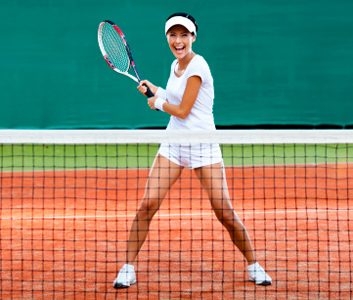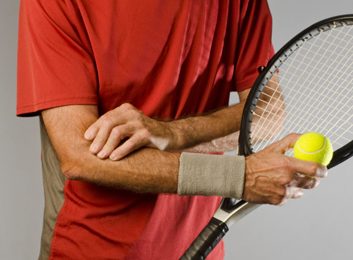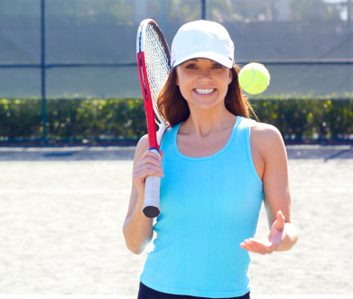
Learning to love tennis
Back when I was in middle school, my mother discovered tennis. So she enrolled my sister, brother and me in lessons. Always uncoordinated, I didn’t like sports, and quickly added tennis to my list. I struggled to hit the ball under the scorching sun. After just one session, I refused to play again.
Then, three years ago, a neighbour suggested my family and a few others join a nearby outdoor tennis club. As an adult, I’d already discovered I did have an athletic side, which I channelled into swimming, yoga and cycling. But seeing my son play soccer made me wonder if competitive sports weren’t so bad-and more exciting than laps in the pool. My mom, who died a decade ago, was no jock, but had found a resonance with tennis. Why couldn’t I?
So I signed us up. While my son took inexpensive group lessons, my three girlfriends and I split the $60-an-hour fee for private lessons. At first I was whacking at the air more than the ball. But after a month, I could return, serve and keep score. And, like my mother, I fell in love with this sport.

The benefits of tennis
Tennis provides a heart-pounding workout without the temptation to look at the clock. According to Rufus Nel, a tennis coach and director of tennis at the Abony Family Tennis Center in Fredericton, you take about 3,000 to 4,000 steps if you play for an hour. It’s estimated that a 150-lb. woman burns about 500 calories in an hour of playing one-on-one. The game can be quite calm and then explosive-a lot like interval training.
“I think it’s a great adjunct to things like long-distance running,” says sports specialist chiropractor Jaclyn Kissel, who works at the Totum North sports clinic in Toronto. The range of movement in tennis helps develop leg muscles and can help to prevent injury and strain in those who do mainly forward-motion exercise. Running and hitting the ball also offers weight-bearing resistance, helping to maintain bone density.
I like that tennis forces me to focus while keeping score. Predicting the ball’s trajectory and plotting strategy keep you mentally busy, too (as does chatting with my girlfriends on the court). And I love that it can be played outdoors. One 2011 review study from the U.K. found that getting fit outside increased the mental-health benefits of exercise, and made people feel more energetic, engaged and satisfied with their workout.

Injury prevention
Since most tennis courts are made of cement or asphalt, and you’re often lunging suddenly for the ball, Kissel says injuries are a concern. Most common, according to a 2006 study in the British Journal of Sports Medicine, are lower-body injuries, such as to the knee or ankle. Next are slow-developing upper body strains to such areas as the wrists, shoulders and elbow (the infamous “tennis elbow”).
Prevention starts with taking lessons: Kissel says tennis elbow can result from a poor backhand, while a bad serving technique can wrench the shoulders. As well, she suggests a proper warm-up before playing, and making sure you’re in good shape before pushing yourself too hard.

The negatives
The one negative is that the outdoor tennis season in Canada is too short. Winter games involve expensive private-club memberships plus court fees. My closest club asks for an $800 family membership fee and court fees in prime time of $22 an hour.
But every summer you’ll find me on the local courts with my friends, my husband and my son, who’s getting pretty good at age nine. The one hold-out: my six-year-old daughter. She’s not naturally athletic, just like her mom and grandmother. But I’m trying to help her grow to adore this engaging sport.

Get the right gear
Invest in tennis shoes: They have built-up ankles to provide support when you are making lateral moves. A good pair might run you about $100.
Get a good racket: Rufus Nel suggests investing at least $150 in a lightweight racquet that won’t strain your wrist. Have the sports store staff fit you properly.
Try a tennis skirt: Fashionable, yes, but practical, too. While you could just wear shorts with big pockets, most women find stuffing balls in the legs of the fitted undershorts on a tennis skirt the most comfy way to play.
Be progressive: So-called “Progressive Tennis” uses slower-moving balls, smaller courts and adapted racquets to help you learn. It’s designed for kids, but clubs are increasingly using it to teach adults, too.
Related:
• Fitness trend: Tennis
• The best ways to get fit this summer
• Get fit with badminton
